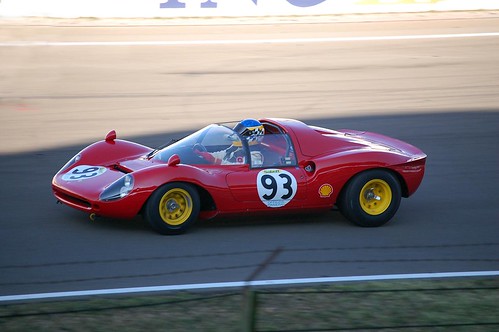
Ferrari Dino 206S, originally uploaded by martinswelt.
Dino was a brand for mid-engined, rear-drive sports cars produced by Ferrari from 1968 to 1976. The Dino brand was meant to be used for cars with engines that had fewer than 12 cylinders, reserving the Ferrari name for the V-12 and flat 12 models. The Dino name was retired after that point, in favour of conventional Ferrari branding. The Dino brand was an attempt by Ferrari to produce a relatively low cost sports car by using components from other vehicles.
The Dino models used Ferrari racing naming designation of displacement and cylinder count with two digits for the size of the engine in deciliters and the third digit to represent the number of cylinders, i.e., 246 being a 2.4 liter 6 cylinder and 308 being a 3.0 liter 8 cylinder.
The Dino 246 was the first Ferrari model produced in high numbers. It is lauded by many for its intrinsic driving qualities and groundbreaking design. In 2004, Sports Car International placed the car at number six on its list of Top Sports Cars of the 1970s. Motor Trend Classic placed the 206/246 at number seven in their list of the 10 "Greatest Ferraris of all time".











